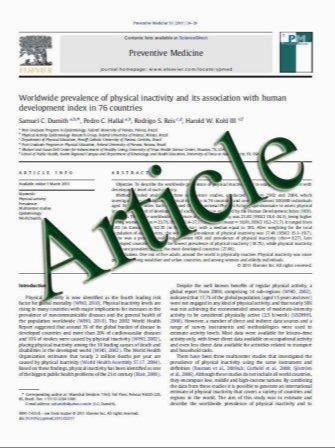The 5352 A allele of the pro-inflammatory caspase-1 gene predicts late-acquired stent malapposition in STEMI patients treated with sirolimus stents
- نوع فایل : کتاب
- زبان : انگلیسی
- مؤلف : Sandrin C. Bergheanu Douwe Pons Bas L. van der Hoeven Su-San Liem Bob Siegerink Martin J. Schalij Johanna G. van der Bom J. Wouter Jukem
- چاپ و سال / کشور: 2010
Description
Late-acquired stent malapposition (LASM) is a common finding after sirolimus-eluting stent (SES) implantation and may be the cause for late stent thrombosis. Inflammation may play a pivotal role in LASM just as it plays in stent restenosis. We have therefore investigated seven polymorphisms involved in inflammatory processes, related in previous reports to restenosis, on the risk of LASM in SES patients. Patients with ST-elevation myocardial infarction who underwent SES implantation and had intravascular ultrasonography (IVUS) data available for both immediate post-intervention and 9-month follow-up were included in the present study. In total, 104 patients from the MISSION! Intervention Study were genotyped for the caspase-1 5352 G/A, eotaxin 1382 A/G, CD14 260 A/G, colony stimulating factor 2 1943 C/T, IL10 -1117 C/T, IL10 4251 C/T, and the tumor necrosis factor alpha 1211 C/T polymorphisms. LASM occurred in 26/104 (25%) of patients. We found a significantly higher risk for LASM in patients carrying the caspase-1 (CASP1) 5352 A allele (RR = 2.32; 95% CI 1.22–4.42). In addition, mean neointimal growth was significantly lower in patients carrying this LASM risk allele (1.6 vs. 4.1%, p = 0.014). The other six polymorphisms related to inflammation were not significantly related to the risk of LASM. In conclusion, carriers of the 5352 A allele in the caspase-1 gene are at increased risk of developing LASM after SES implantation. If this is confirmed in larger studies, then screening for this polymorphism in patients undergoing percutaneous coronary interventions could eventually help cardiologists to better select between commercially available stents.
Heart Vessels (2011) 26:235–241 DOI 10.1007/s00380-010-0046-8 Received: 23 November 2009 / Accepted: 1 April 2010 / Published online: 30 October 2010


